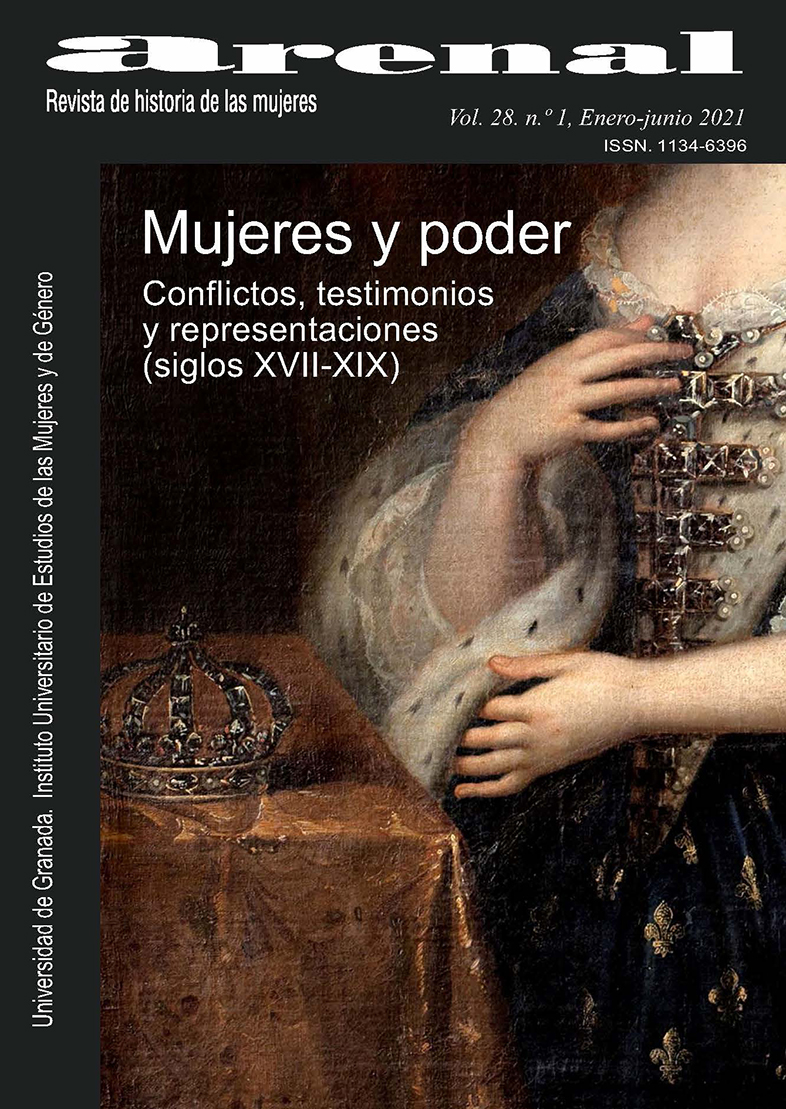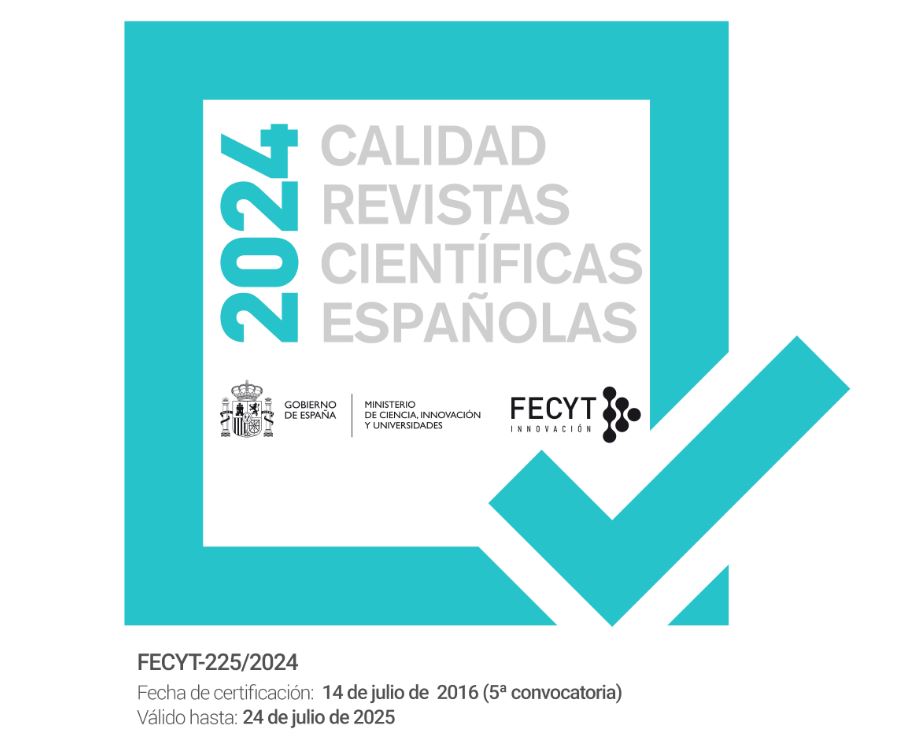Sonia Terk-Delaunay, o cómo morir dos veces. El reconocimiento como categoría de análisis para la reconstrucción histórica de la vida de las mujeres
DOI:
https://doi.org/10.30827/arenal.v28i1.7794Palabras clave:
Arte, Sonia Terk Delaunay, Canon occidental androcéntrico, Feminismo, Reconocimiento., SituaciónResumen
El canon androcéntrico en la Historia del Arte es analizado en este artículo, utilizando el ejemplo de la artista Sonia Terk, su relación con el también artista Robert Delaunay, así como su legado (escritos y obra plástica). Basado fundamentalmente en las fuentes primarias del diario de Sonia Terk Delaunay y en textos escritos por artistas y críticos del entorno, el texto adopta una perspectiva sistémica, desde los estudios sobre creatividad, la teoría del punto de vista feminista y el paradigma del reconocimiento de Nancy Fraser. Usando el estudio de caso de la vida de Sonia Terk, el artículo analiza los distintos estadios en la consecución del éxito y aceptación profesional de la artista. Este prestigio sera, sin embargo, eliminado tras su muerte, en aquellos textos y manuales al uso que recopilan los principales nombres de la historia del arte occidental. Aplicando el paradigma del reconocimiento, el artículo muestra el modo en que la historia canónica va disminuyendo el valor de las obras femeninas hasta reducirlas a anécdota, subrayando el carácter de dependencia, contingencia y subalteridad de las artistas.
Descargas
Citas
AMORÓS, Celia y DE MIGUEL, Ana (2005): Teoría feminista: de la ilustración a la globalización. Madrid, Minerva Ediciones.
BEAUVOIR, Simone de (or. 1949, 1993): The Second Sex. Ed. y traducción de H. M. Parshley. Nueva York, Alfred A. Knopf. En castellano (2017): El Segundo Sexo. Madrid, Cátedra.
BUTLER, Judith (1991): “Contingent Foundations: Feminism and the Question of ‘Postmodernism’”. Praxis International, 11: 150-165.
CHADWICK, Whitney y COURTIVRON, Isabelle de (1996): Significat Others: Creativity and Intimate Partnership. Nueva York, Thames and Hudson. En castellano (1994): Los otros im- portantes: creatividad y relaciones íntimas. Madrid, Cátedra.
CHILVERS, Ian y GLAVES-SMITH, John (2009): A dictionary of Modern and Contemporary Art. Oxford, Oxford University Press.
CSIKSZENTMIHALYI, Mijail (1996): Creativity: Flow and the Psychology of Discovery and Inven- tion. Nueva York, Harper Perennial. En castellano (1998): Creatividad: el fluir y la psicología del descubrimiento y la invención. Barcelona, Paidós.
DELAUNAY, Sonia (1978): Nous irons jusqu’au soleil. París, R. Laffont.
FRANCASTEL, Pierre (1958): Du cubisme à l’art abstrait, cahiers inédits de Robert Delaunay. París, École Pratique des Hautes Études.
FRASER, Nancy (1996): Social Justice in the Age of Identity Politics: Redistribution, Recognition, and Participation. Standford, Tanner lectures on Human values.
FRASER, Nancy (2013): Fortunes of Feminism. Londres,Verso.
GARDNER, Howard (1982): Art, mind and brain. A cognitive approach to creativity. Nueva York, Basic Books Inc. En castellano (1997): Arte, mente y cerebro: una aproximación cognitiva a la creatividad. Barcelona, Paidós.
GARDNER, Howard (2011): Frames of mind: The theory of multiple intelligences. Nueva York, Basic Books. En castellano (1994): Estructuras de la mente: la teoría de las inteligencias multiples. Madrid, Fondo de Cultura Económica.
HARDING, Sandra y HINTIKKA, Merrill B. (2004): The feminist standpoint theory reader: inte- llectual and political controversias. Nueva York, Routledge.
HARTSOCK, Nancy (2003): “The feminist standpoint: developing the ground for a specifically historical materialism”. En HARDING, Sandra y HINTIKKA, Merrill B. (2.ª ed.) (2003): Discovering reality: feminist perspectives on epistemology, metaphysics, methodology, and philosophy of science. Londres, Kluwer Academic Publishers.
LÓPEZ PARDINA, Teresa (1998): Simone de Beauvoir, una filósofa del siglo xx. Cádiz, Universidad de Cádiz.
MARINA, José Antonio (1993): Teoría de la inteligencia creadora. Barcelona, Anagrama.
MARINA, José Antonio y RODRÍGUEZ DE CASTRO, María Teresa (2009): La conspiración de las lectoras. Barcelona, Anagrama.
SARTRE, Jean Paul (1947) “Qu’est-ce que la littérature?”. Les Temps Modernes, 17. VV.AA. (2004): Salvat Enciclopledia. Barcelona, Salvat Editores.
WALTER, Ingo (2005): Masterpieces of Western Art. Frankfurt, Taschen.
Descargas
Publicado
Cómo citar
Número
Sección
Licencia
Los/as autores/as que publican en esta revista están de acuerdo con los siguientes términos:
Los autores/as conservarán sus derechos de autor y garantizarán a la revista el derecho de primera publicación de su obra, el cuál estará simultáneamente sujeto a la Licencia de reconocimiento de Creative Commons 4.0 BY-NC-ND que permite a terceros compartir la obra siempre que se indique su autor y su primera publicación esta revista.
Los autores/as podrán adoptar otros acuerdos de licencia no exclusiva de distribución de la versión de la obra publicada (p. ej.: depositarla en un archivo telemático institucional o publicarla en un volumen monográfico) siempre que se indique la publicación inicial en esta revista.
Se permite y recomienda a los autores/as difundir su obra a través de Internet (p. ej.: en archivos telemáticos institucionales o en su página web) antes y durante el proceso de envío, lo cual puede producir intercambios interesantes y aumentar las citas de la obra publicada. (Véase El efecto del acceso abierto).














